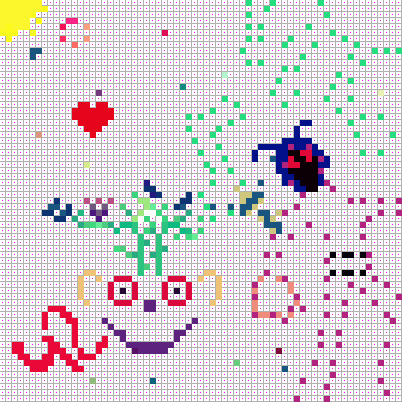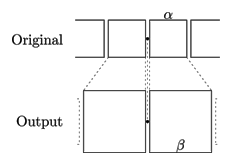Good Design and Empathy
Let me pick on DMV a little, but for a good reason – not just to complain about this much-disliked organization.
I registered my car in the California DMV more than a year ago. Since then I've familiarized myself with HOV lanes and their rules, and, consequently, the Clean Air Vehicle decals. It was learning through osmosis: I kept seeing these diamond shapes on the highway and the signs that informed me of the HOV lane rules. Later, by observing other cars on the road, I've noticed enough of the decals around me to spot a theme and wonder what they are. A quick google search confirmed what I had suspected: if your car satisfies certain requirements, you can purchase a decal, which lets you ride in the HOV lane when normally you wouldn't be allowed to.
I thought it might be good to get one, especially that I knew that my car satisfies the conditions. So I scrolled half way down the DMV webpage that Google found for me and found the link to the fillable PDF, which I downloaded and filled out. The form was mostly intuitive. In a few places I had to refer to my documents. There was a section at the top of Page 2 that I almost missed. And once I printed out the form, I noticed that the PDF software (Preview) messed up a few fields, which I had to correct in black ink. Then I put the form in an envelope, enclosed a check for $8, and mailed it out. Two or three weeks later, I receive my decals in the mail. I haven't put them on my car – the decals are sort of ugly looking, surprisingly large, and you need to literally plaster your car (with three of them, one from each side). So I'm waiting until I need to use one, for example, I'm in a rush and need to use the highway during rush hour. So far, fortunately, that hasn't happened.
Nothing about the above should be shocking to you. I'm sure that you go through a similar workflow multiple times in a week (though – hopefully! – not all of them involve the DMV). It's actually one of the least painful of the DMV workflows.
But from the point of view of good design, it's an awful one. It highlights the problem that I've noted hundreds of times, a kind of death of a thousand little daggers. All these suboptimal experiences set a kind of expectation in us; they numb us to the fact that poor user experience surrounds us.
How could this experience be better? I like to think of user experience as layers of an onion, and peel one layer after another, at each level asking a simple question or two: what causes the most pain? What creates the most friction?
In the case of my DMV decal experience, I think the most surface-level pain was filling the PDF out. It took me a long time, but, more painfully, when I finished filling out the PDF, I wasn't confident that the printed out version will contain all my edits. Why not? Try to fill this form out yourself on a Mac. Some fields (YEAR) replace my value with a 0 on blur. Some fields (UNIT NO) are misaligned. Some fields (top fields on page 2) seem like they are linked to the respective fields on page 1, but the values only show up on focus. Reliability is key, especially when paperwork is required (since the cost of an error is relatively high). So, in this first layer, I'd say that the PDF filling experience could be more reliable and consistent.
That would be great. If that was solved, my next complaint would be the efficiency and complexity of the workflow. Why should I have to print out the PDF, then put it in an envelope, and mail it out? Ironically, the technology for fillable PDFs is significantly more advanced that the technology that makes online forms possible. That would save some trees, and save me and the DMV lots of time (let alone simplify my workflow of having to have an envelope, a stamp, and a nearby mailbox). Even in the most basic form (no error checking) it saves me 5 minutes to do the printing and mailing, and it saves the DMV somewhere between 5 and 20 minutes of bureaucracy. In the second layer, the filing/submission experience could be simpler and more efficient.
With that out of the way, I'd focus on redundancy. Why do I need to enter all my personal info? The DMV has my address on file; if my address hasn't changed (the 98% use case!), I should not have to specify it. Similarly, the DMV has the VIM, the make, and the model of my car. In fact, all I should have to do is enter my unique identifier (I'd love a username that I keep with the DMV, but a physical ID, or name+license number will suffice) and the engine type/whatever the DMV requires to ensure that I qualify for the decal. Hell, even the latter isn't necessary – the DMV has the VIN, the vehicle make, model and year. Again, in 95% of all use cases, the car automatically satisfies the requirements. The input experience could be more minimal.
From here it's not hard to realize that as a user, I should not even have to fill out a form. The DMV knows my registration info, and manages the eligibility rules. So the DMV should automatically – proactively – do the matching and simply send me the decals. They could add the $8 fee to the annual vehicle registration fee. In fact, I should get the decals as soon as I register my car – I shouldn't have to wonder why some cars have decals and what they mean.
Of course, a good user experience designer will automatically see through all these layers. In fact, it's relatively easy to envision the ideal workflow that I described above. But the point is not that the experience could be better. It should be better, and the fact that it's not points to fundamental gaps in how product and service designers (both the fillable PDF makers and the DMV) perceive users, their context, needs, and experience.
What causes this? At a proxy level, there are incentive issues (the DMV doesn't feel the acute pressure to make the user experience better), use case complexity (I'm sure the makers of Preview tested their software, but I'm guessing fillable PDFs are very difficult to test exhaustively), responsibility issues (there is probably no single person responsible for the entire decal user workflow; and in many cases, the left hand in the organization is not talking to the right hand). But at the fundamental level, this is an issue of empathy.
Many experienced Product Managers will tell you that empathy differentiates a good PM from a great one. But empathy is a quality that needs to be shared by everyone in an organization, not just select employees. It's like common sense or the ability to communicate. And yet, it's far from prevalent. It's that way because companies don't emphasize it when hiring, they don't value it internally, and they rarely reward it. Worse, empathy is often misunderstood. Empathy is the capacity to recognize emotions felt by other people. It doesn't mean the ability to be compassionate (though it's a prerequisite for the latter). It does not mean being "nice" or "fair". To have empathy means to observe the other (easy), to actually listen to the other (hard), and to suspend one's ego (very, very hard).
There were probably dozens, maybe hundreds, or people involved in the design and implementation of the decal application experience. If just one in ten put themselves in the shoes of the end user (a little bit of empathy), they would invariably see the pain that the end user is feeling. If just one in fifty stopped to think about what would make the experience as painless as possible for the end user (a lot of empathy), I wouldn't have needed to write this post.
What could we, mere users, do to make a difference? The simplest thing each of us can do is expect more. Expect to be delighted. Expect to have a pleasurable experience. Train yourself to identify the pain, no matter how small, and talk about it. Complain, be vocal, fill out reviews, call Customer Service. Make it known that user experience is something you value a lot. Be critical of products and services which are unreliable, inefficient, redundant. Don't tolerate even a single little dagger. Organizations – even the DMV – respond to what their customers value. One voice is not enough, but one voice, multiplied a thousand times, is no longer a voice. It's a roar.







